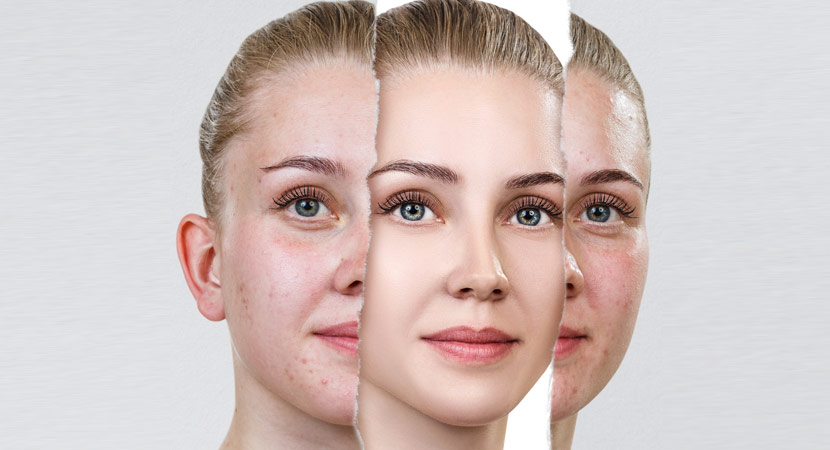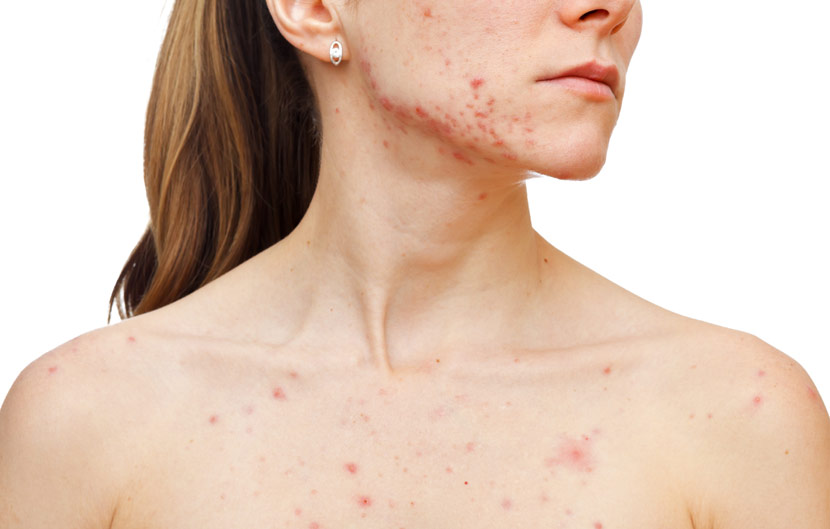
Once the hair follicles, or in simple terms, the opening on the surface of your skin get clogged with bacteria, excessive oil, or dead skin cell; acne develops near the skin’s surface.
Acne goes away in a few days but it can leave scarring behind, permanently. Scarring is the result of damage to skin tissue. There are two main types of acne scars:
1) Discoloured scars or post-inflammatory hyperpigmentation- during the healing process, your body sends melanin to the affected area to speed up healing, however, an excess of melanin often leaves darker patches on the skin surface.
2) Indented or atrophic scars- they look like holes in your skin. Indented scars occur when your skin produces little collagen in order to repair injured tissue. This faulty healing process creates a small pit-like shape on the face.

How can we prevent acne scars?
You may be able to reduce the appearance of acne scars by starting acne treatment once they become active. Early treatment can reduce the appearance of acne scars. Treatments include oral medications, over-the-counter lotions, and laser therapy. To reduce the acne scars we also recommend avoiding squeezing, picking, or popping your breakouts, as these actions may increase the risk of inflammation or hyperpigmentation.
What are the treatments for acne scars?
Scars can affect your self-confidence. You may consider short-term solutions such as covering your scars with foundation and makeup for women or growing a beard for men. However, since these are not long-term solutions, you may begin to wonder what could reduce the appearance of the scars. Treatments include but are not limited to:
Chemical peel: This procedure involves applying an acid solution to the outer layer of your skin. While it may sound intimidating, consider how it enables the emergence of new skin by removing the old damaged layer. The chemical peel works by applying a solution to your skin, prompting the old skin to peel off and allowing new, smoother skin to replace it. The strength of the peel solution can be adjusted according to your skin condition.
Laser treatment: The combination of heat and light from the laser will increase blood flow to the area. It also creates nano-injuries to your skin, which result in generating more collagen and eventually promoting healthier skin. Some common laser treatments for acne scars are resurfacing and fractional laser. In both techniques, a thin layer of skin will be removed to promote the generation of new, healthier, smoother skin. Fractional laser is more invasive and aggressive compared to resurfacing and should be performed by a professional.
Microneedling: Uses a handheld device that penetrates the skin with a few sterilized needles. Microneedling creates micro-injuries to the skin. These injuries trigger the skin healing process, producing more collagen and elastin to plump indented scars.
Stem cell therapy: It is a golden approach for acne scar treatment. Stem cells are immature cells found in many different organs and tissues, including our bone, brain, blood, and muscles. Stem cells can turn into different types of cells in our body. The treatment works by injecting the stem cells into the desired area, repairing damaged skin.
At blue clinic our well-trained staff uses a combination of treatments to effectively treat different types of scars.
For the best result we recommend 1 to 2 sessions per week for 4 to 6 weeks.
Post-care
- Stay out of the sun
- Apply sunscreen SPF 45 or higher for the next 4 weeks
- Skipping exercise for a day or two
- Apply ointment such as petrolatum, aloe, hyaluronic acid, vitamin E or C, and antioxidants to prevent water loss while keeping your skin hydrated.

